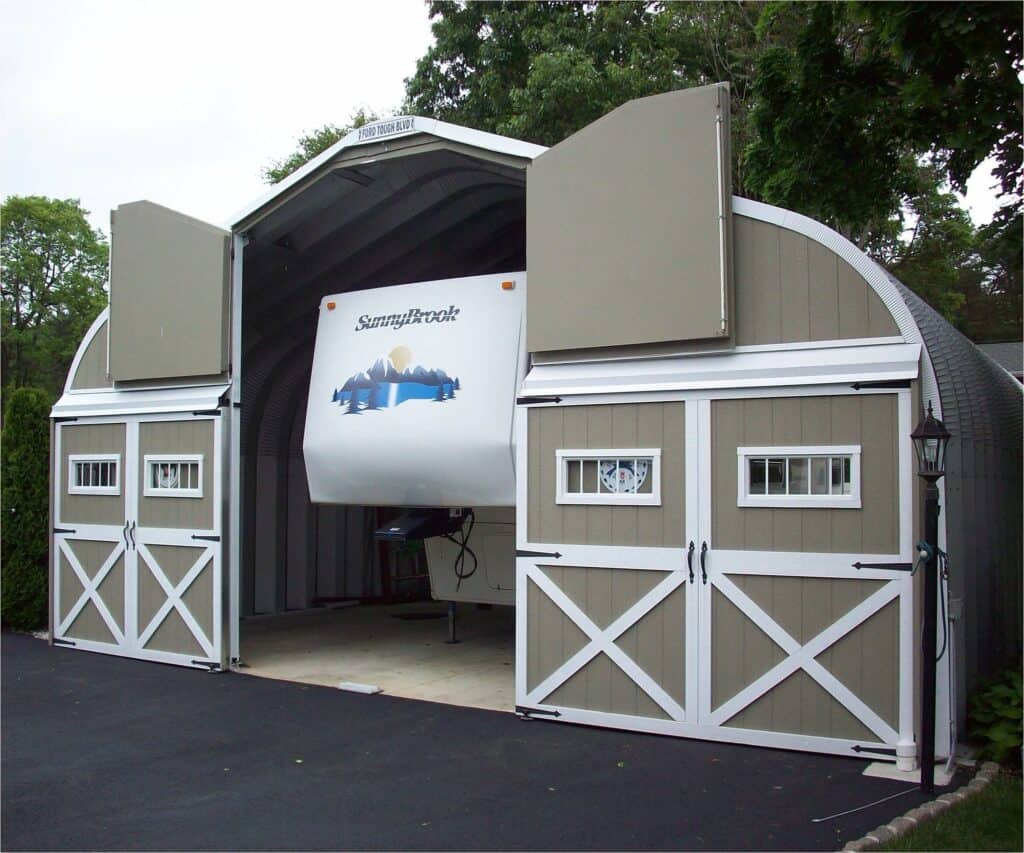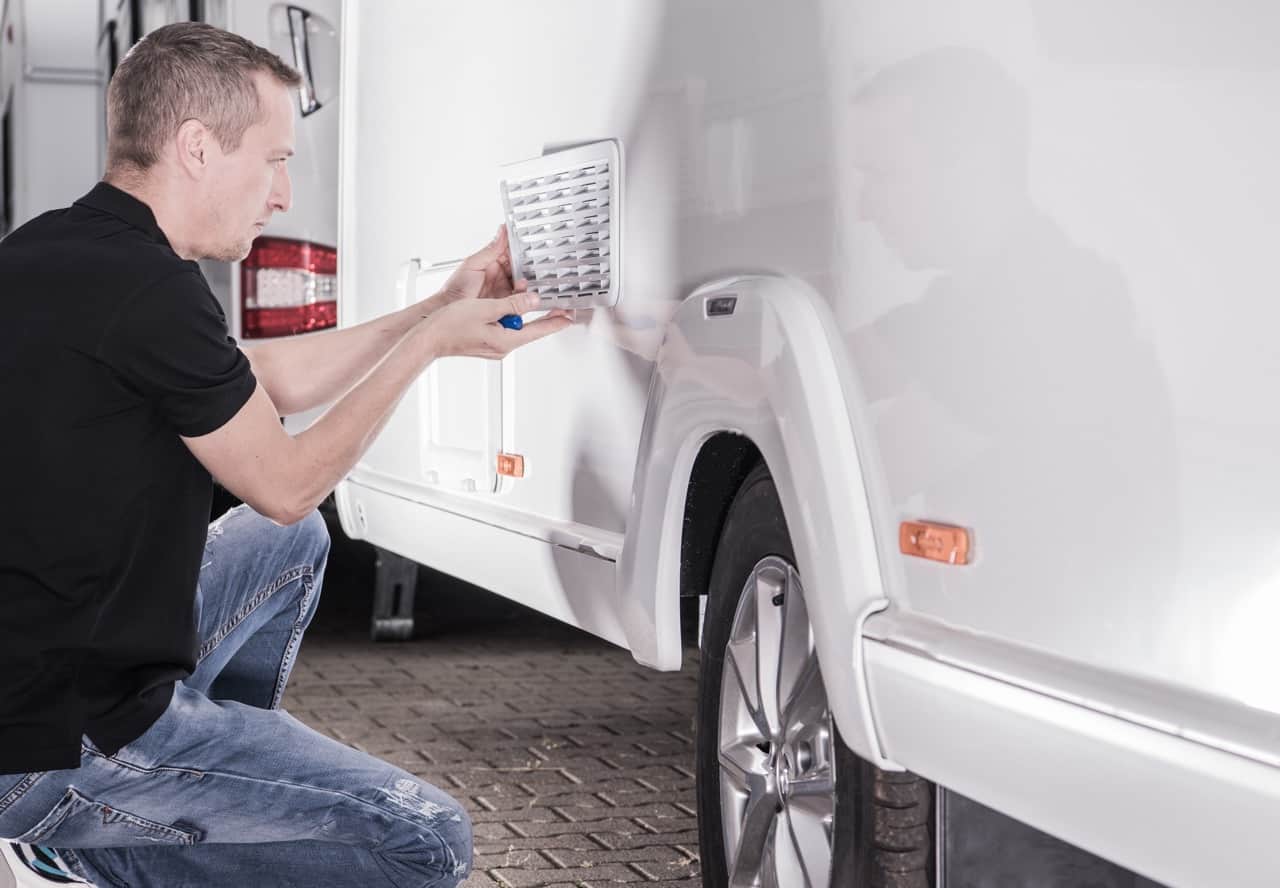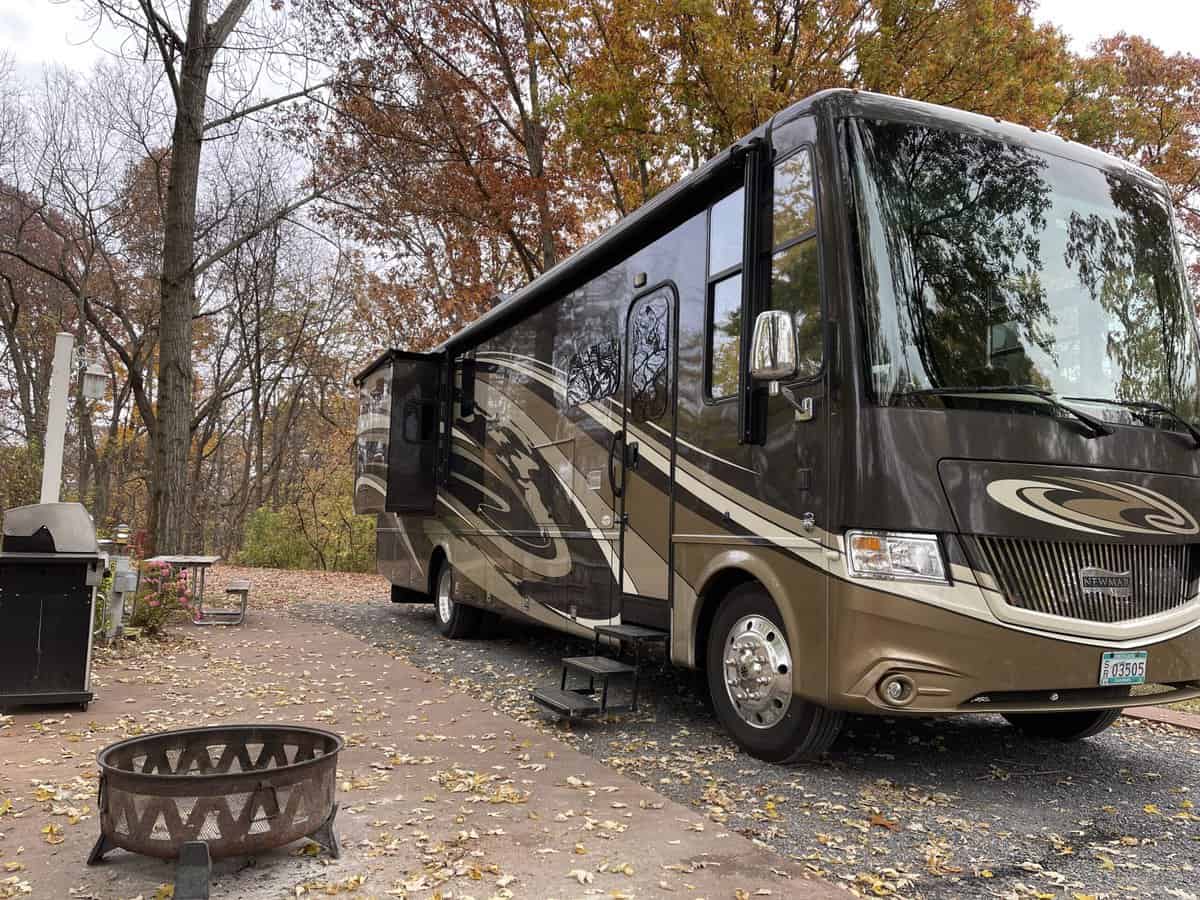
The Best RV Storage Humidity Control Options
Unless you live in your RV year-round, you will probably have to store it during certain parts of the year. Whether you do this at home or in a storage facility, there are some types of damage to avoid at all costs, including trapped moisture. One common problem that owners face is finding good RV storage humidity control options.
Storing an RV in a climate-controlled facility is a good way to avoid humidity damage. Make sure the unit is as dry as possible before storing, and consider adding desiccants or running a dehumidifier. Empty all the holding tanks as well.
For some people, it might not be practical to pay for climate-controlled storage for several months every year. For those who want to store their RV at home or in another type of facility, we’ve got some ideas to help you avoid moisture accumulation and the long-term damage it can cause.
Dealing with moisture in an RV
Humidity is something that most people have to deal with at some level, but it has the potential to cause serious problems if it’s left unchecked for long periods of time. RVs that are stored in humid conditions can develop mold, fungal growths, mildew, and a number of other health hazards. Bacteria thrive in moist conditions, so a humid RV can be a breeding ground for disease and unwanted pests.
In addition, the moisture itself can cause damage as well. Water damage is the enemy of any man-made structure, and even if it’s just in the air, it can become a major issue. Humid RVs can experience warping, rotting, and rusting, which will lower their resale value and make them harder to travel in.
So, for the sake of you and your vehicle, let’s explore some of the best RV storage humidity control options. These tips will keep your camper in better shape for the next time you’re ready for a road trip!
What are the best RV storage humidity control options?
As we mentioned before, one of the best and easiest ways to store your RV is by choosing a climate-controlled storage facility. These will need to be large enough to house your RV for extended periods of time. However, these aren’t cheap and they usually have limited availability. After all, it takes a lot of space and money to create an environment that’s temperature and humidity-controlled.
This isn’t a realistic solution for everyone, but you have other options! For instance, you could store your RV in a covered parking area. This will protect it from rain and snow, but will still keep it in the open air. This is a much cheaper solution, but if you live in a humid environment, it could still be heavily affected. Proper ventilation will be important in this scenario.
You can also choose to keep it in your garage (if it’s big enough), and keep dehumidifiers running during its time in storage. This may drain some electricity, but you’ll have more personal control over the situation. It’s also cheaper than paying someone else to store it!
The storage method you choose doesn’t matter as much as the preparatory steps you need to take. If you live in a fairly dry area, you won’t have to worry about humidity as much as others, but there are still some precautionary steps every owner should take. Even if the exterior is protected from humidity, moisture can still cause problems inside. We’ll discuss some ways to prevent or reduce humidity within your RV below.
Reducing humidity in an RV
Check for leaks
All the RV storage humidity control options in the world won’t do you much good unless you can ensure that your vehicle is firmly protected against outside conditions. This is why it’s important to thoroughly check your RV for cracks, leaks, and any weak points that let in unwanted moisture. Before storing, do a complete check of your vehicle. Pay special attention to the gaskets around your windows, doors, and vents. See if you can feel any air entering or leaving. Look for any condensation or pooled moisture on interior surfaces.
Don’t forget to check the roof as well! It’s easy to overlook cracks and rips up there because they aren’t immediately visible from ground level. Consider applying a fresh coat of sealant before storing your RV.
Dump and dry before storing
Now that you know the state of your vehicle, you can prepare it for storage. Begin by dumping the holding tanks and cleaning them. Keeping tanks of fluid in your RV can lead to moisture problems later (especially if it’s from the grey and black tanks).
You’ll want to deep clean your RV before storage anyway, but be sure you wipe down and dry every surface. Don’t leave any standing water or wet surfaces, especially in the kitchen or bathroom.
Desiccants/Moisture Absorbers
Next up, you can focus on the problem areas within your RV. Some areas are more likely to retain moisture, which can cause lots of problems. Some common places to focus on are the kitchen, sinks, vents, closets, bathrooms, cupboards, and windows.
You can use desiccants like bamboo charcoal or silica packets in these areas. DampRid is also a brand that makes great moisture absorbers for RV and boat owners. Choose one of these options and spread them throughout your camper. Now if moisture does get in, it won’t build up!
Dehumidifiers
Finally, we have dehumidifiers. This is one of the more obvious solutions because it’s right in the name! If you live in a humid area, you’ll definitely want to invest in at least one of these units. Some dehumidifiers can operate with batteries, while others will need a constant supply of electricity.
If you can, try to purchase a model that can sense the humidity levels of the surrounding area and adjust accordingly. This will conserve energy and make it more responsive to the environment. Generally speaking, RVs shouldn’t be kept in areas with more than 50% humidity. You probably won’t need to run a dehumidifier if you store your vehicle in a climate-controlled facility, but it’s a good idea to use one if you store it at home.
Ventilation
When you’ve chosen the best RV storage humidity control options for your needs, you can largely leave your vehicle sealed up. You won’t want to expose it to fluctuating temperatures and humidity levels.
However, once you get the vehicle back out and start traveling, ventilation is a great way to prevent moisture build-up. Run your A/C often when you drive and make sure you get proper airflow.
Once people begin using the RV, humility can get trapped if there isn’t good ventilation. Moisture can come from the inside or outside, so it’s important to maintain a healthy balance. But in terms of long-term RV storage, you won’t need to create much airflow apart from the small amount a dehumidifier can provide.
Make sure you keep track of all your RV maintenance and repairs with an online tool such as RV LIFE Maintenance. Not only can you keep all of your documents in one place, but you’ll also receive timely reminders when maintenance is due to help you avoid costly repairs and potentially serious accidents.
Related articles:





My motor home sits in the open sun here in north Florida. I leave at least one vent open. The bathroom vent is always open and for no good reason the vent near the kitchen/dining is sometimes left open. I don’t have moisture problems.
I have owned several RV’s. Pull type, 5th. wheels and now a motorhome. I have stored one of these 5th wheels inside a steel quanset (it was ventilated, but not enough). I stored the RV this way for one winter with some humidity problems (I finally used a de-humidifier because I was concerned about the interior humidity. Following that winter, I had a concrete pad poured adjacent to my home, the RV sits outside, I open all of the roof vents (bathroom, Dinette and mid-roof vent) Although all of these are motorized, I do not run any of them. I leave all these vents opened and I get natural ventilation. Result: no concerns of humidity. I have been doing this for 14 years. I live in Edmonton, Alberta.
We use Storage Dehumidifier Rods by Dampp-Chaser and they work great in controlling humidity in small spaces. storagedehumidifier.com and you can get on Amazon
Works great then all these listed here, cheaper and not all the problems if your RV is to large for the climate control or even cover storage we add a few of these in each room.. These work the best before it’s covered.
I’m considering buying the Winnebago EKKO. I wondering if it’s extra insulation would help or hurt keeping the inside dry?
Lee